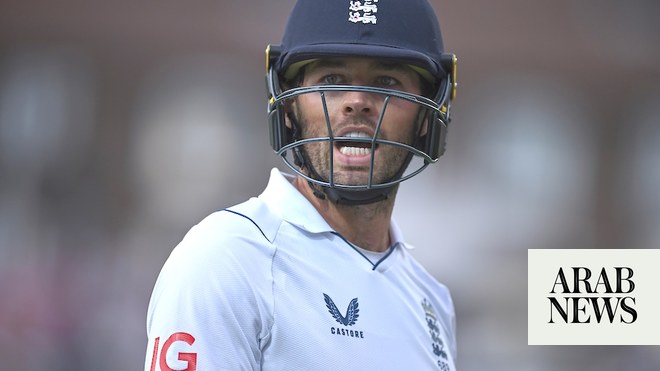
Like goalkeepers, the only cricket fielders with gloves are a breed apart, often displaying idiosyncratic tendencies, but their batting numbers often make a difference
The most frequent method of dismissal in cricket is being caught out by fielders other than the wicketkeeper. Detailed analysis reveals that, between 1877 and 2012, the method accounted for around 40 percent in Test cricket.
This is confirmed by analysis of post-2012 data. When the 20 percent caught by wicketkeepers is added, the total percentage of dismissals achieved by catches rises to 60 percent.
Wicketkeepers also effect stumpings, some 2 percent of dismissals. Given the level of importance attached to this single position, it would be reasonable to assume that the selectors of a team would always choose their best wicketkeeper.
An early precedent was set for this concept. In the first ever Test, between Australia and England at Melbourne in 1877, Jack Blackham was selected for Australia ahead of Billy Murdoch because Blackham was considered to be a superior keeper. Murdoch’s first-class career had started in 1875, when he was regarded as the finest wicketkeeper in Australia. Consequent on the selector’s decision, Australia’s fast bowler, Frederick Spofforth, refused to play in the match. Both he and Murdoch were reinstated for the second Test, but Blackham kept.
Controversy over this type of decision has never gone away, but usually it is about not selecting the best keeper.
Last week, England’s Test team selectors were faced with a conundrum. The incumbent wicketkeeper is Ben Foakes, widely regarded by most observers as the finest in the country and, perhaps, more widely. He has been in and out of the England team between November 2018 and May 2023, playing in 20 out of 55 Tests. His Test batting average is a respectable 32.2, which includes match winning innings.
England’s new adventurous approach to Test cricket in summer 2022 was encapsulated by the batting of Jonny Bairstow, himself a more than competent wicketkeeper. A freak break of Bairstow’s leg in September 2022 kept him out of cricket, including the T20 World Cup and the IPL, until last month. During the winter, a new English batting star emerged in Harry Brook. The selectors had several choices. They could either drop Brook for Bairstow or drop an opener for Bairstow and move someone else up the order, or drop Foakes for Bairstow, who would then keep wicket. The latter was the decision taken for the first Test match of the summer against Ireland, starting on June 1.
It is one that has reopened old arguments and, for Foakes, perhaps old wounds, as this has happened to him twice before. He has played a big part in England’s recent run of 10 wins in their last 12 Tests and was almost the match winner in England’s one-run defeat in February at Wellington, New Zealand. Bairstow’s Test batting average is slightly higher than Foakes’ at 37, his best performances coming when batting between number five and seven in the order. It is the attacking manner of his batting which may well have swayed the decision, given that the main opponent this summer is Australia.
England have been in this position before on more than one occasion. Alan Knott was selected 95 times for England in Tests between 1967 and 1981, averaging 32.75. His Test career ended when he chose to join a rebel tour to South Africa in 1981-82. This allowed Bob Taylor, a long-term reserve, to take over. Some observers judged Taylor to be a superior keeper, but his batting was inferior to Knott’s, as a Test batting average of 16.28, mainly compiled after Knott’s retirement, would attest.
Wicketkeepers, like goalkeepers, are a breed apart, often displaying idiosyncratic tendencies. Knott, for example, always kept his shirt collar turned up as protection from the sun and his shirt sleeves buttoned down to provide extra protection when diving. One of the most eccentric wicketkeepers was England’s Jack Russell. Apart from an admission to drinking 20 cups of tea a day, having a diet of chocolate biscuits, chicken and bananas, plus an unusual stance for both batting and keeping, Russell was a landscape painter. He played 54 Tests for England between 1988 and 1998, sometimes receiving shabby treatment from team selectors.
High quality wicketkeepers are a joy to watch. When Rodney Marsh was first selected for Australia in 1970, he was dubbed “Iron Gloves” by those who preferred the man he displaced. Marsh went on to dispel this derogatory epithet, claiming a then world record 355 Test dismissals, 95 caught off the bowling of Dennis Lillie. At first sight, Marsh did not appear to be athletic, but was quick footed and agile.
An old adage has it that the true test of a wicketkeeper is the quality of his/her ability to stand up to the stumps to take the ball as opposed to standing back from the stumps. It would be unusual, but not unheard of, for keepers to stand up to fast bowlers. Edges fly so quickly off the bat that the best chance of catching them is by standing some distance back. Conversely, keepers do not stand back to slow or spin bowlers. Potential catches would drop short and opportunities to dismiss batters lured out of the crease would be passed up.
In wicketkeeping, everything leads from the head, whether diving or jumping up or down. Since a keeper is doing the same thing repeatedly, consistency of movement is vital, so that distance between feet does not vary. Needless to say, watching the ball all the time is imperative, as are quick reflexes.
Coaches will normally advise that the ball must be waited for, with the hands giving as the ball enters the gloves. However, the legendary M.S. Dhoni of India keeps his hands close to the stumps when standing up to save a split second on a stumping opportunity.
No discussion of wicketkeepers can pass without acknowledging Kumar Sangakkara of Sri Lanka. Although his wicketkeeping may not have satisfied purists, his extraordinary batting average of 57.4 in 134 Tests, exemplifies the tendency towards selecting a wicketkeeper, who may not be the best available, but offers superior batting potential.












